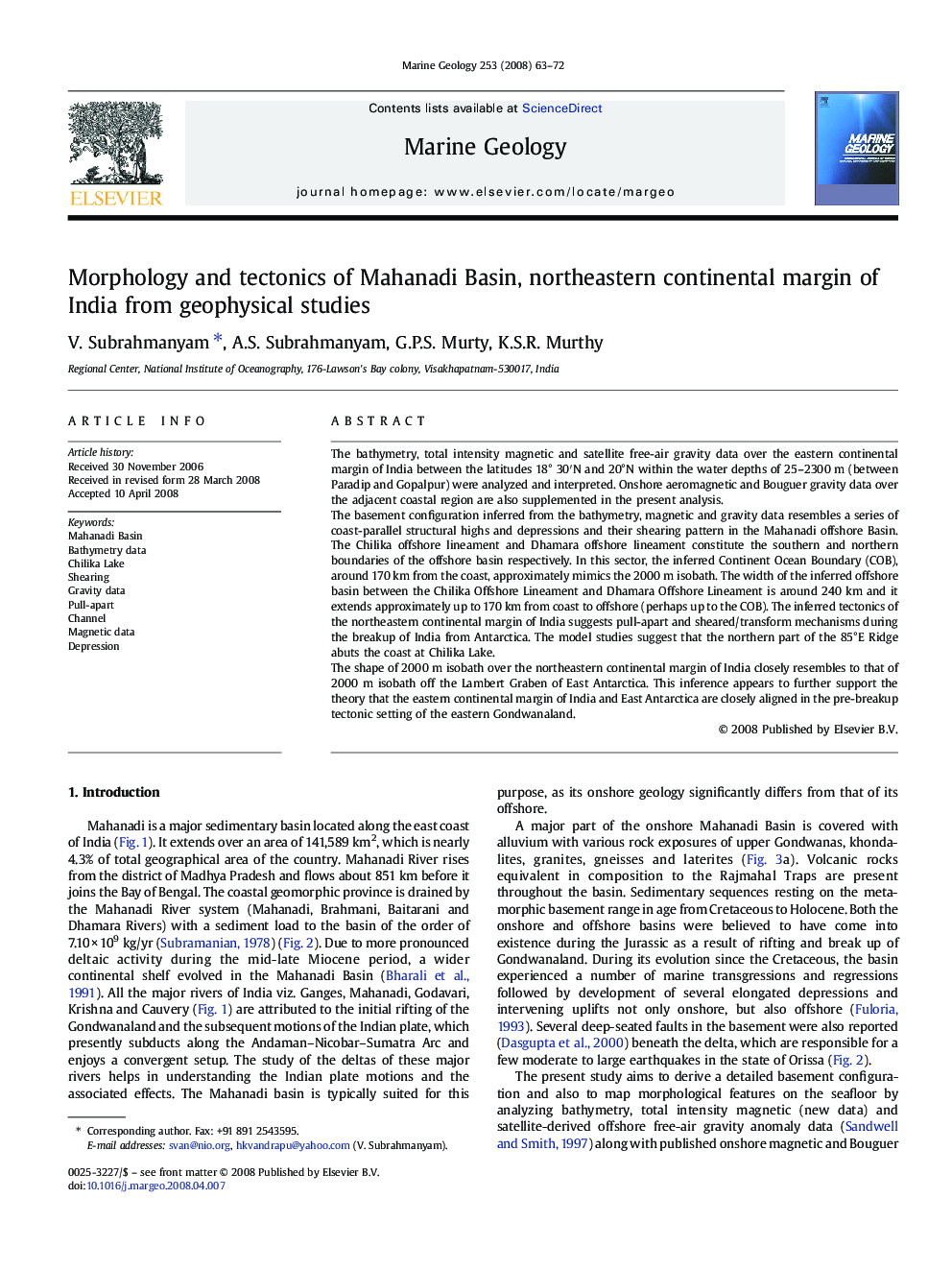| Article ID | Journal | Published Year | Pages | File Type |
|---|---|---|---|---|
| 4719279 | Marine Geology | 2008 | 10 Pages |
The bathymetry, total intensity magnetic and satellite free-air gravity data over the eastern continental margin of India between the latitudes 18° 30′N and 20°N within the water depths of 25–2300 m (between Paradip and Gopalpur) were analyzed and interpreted. Onshore aeromagnetic and Bouguer gravity data over the adjacent coastal region are also supplemented in the present analysis.The basement configuration inferred from the bathymetry, magnetic and gravity data resembles a series of coast-parallel structural highs and depressions and their shearing pattern in the Mahanadi offshore Basin. The Chilika offshore lineament and Dhamara offshore lineament constitute the southern and northern boundaries of the offshore basin respectively. In this sector, the inferred Continent Ocean Boundary (COB), around 170 km from the coast, approximately mimics the 2000 m isobath. The width of the inferred offshore basin between the Chilika Offshore Lineament and Dhamara Offshore Lineament is around 240 km and it extends approximately up to 170 km from coast to offshore (perhaps up to the COB). The inferred tectonics of the northeastern continental margin of India suggests pull-apart and sheared/transform mechanisms during the breakup of India from Antarctica. The model studies suggest that the northern part of the 85°E Ridge abuts the coast at Chilika Lake.The shape of 2000 m isobath over the northeastern continental margin of India closely resembles to that of 2000 m isobath off the Lambert Graben of East Antarctica. This inference appears to further support the theory that the eastern continental margin of India and East Antarctica are closely aligned in the pre-breakup tectonic setting of the eastern Gondwanaland.
